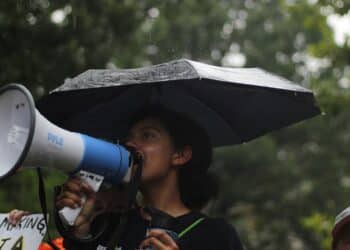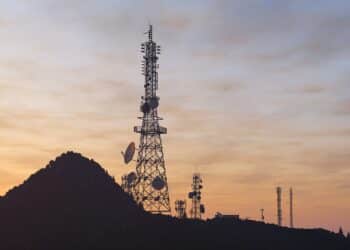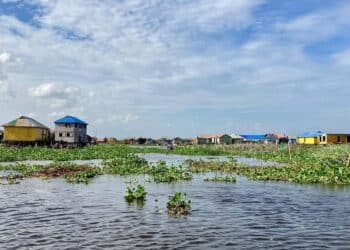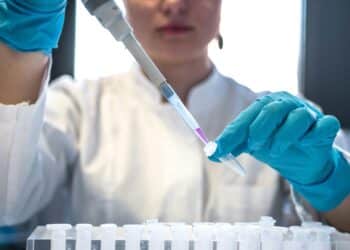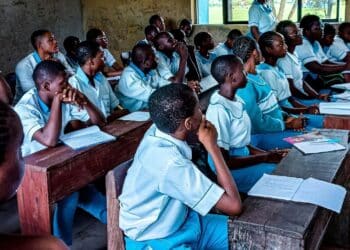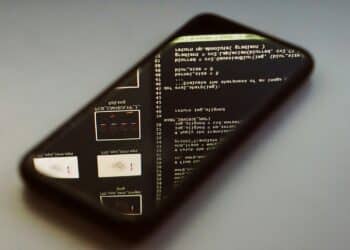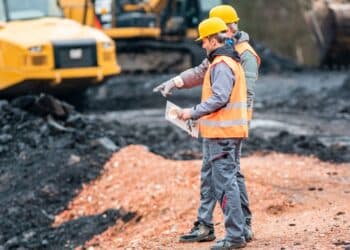News
Our News category at Global Current News provides fast, reliable coverage of breaking events and key developments worldwide, including in the United States. From political decisions and economic shifts to cultural milestones and scientific breakthroughs, our skilled journalists bring you the latest reports with precise, concise analysis. Stay informed and connected to the global conversation with up-to-the-minute updates.
Trump administration broadens U.S. travel restrictions, barring supporters from Senegal and Ivory Coast ahead of the 2026 World Cup
The United States, through an Executive Order, is expanding its previously announced Travel Ban in order to include two new...
Read moreDetailsSudan returns to the top of global humanitarian emergency rankings as conditions deteriorate
The International Rescue Committee (IRC) has added Sudan to its watchlist. The report, published on 16 December, shows the correlation...
Read moreDetailsIndia deepens diplomatic ties with Ethiopia as Prime Minister Narendra Modi visits Addis Ababa
Prime Minister Narendra Modi began a historic first visit to Ethiopia this week, marking the beginning of a new era...
Read moreDetailsIndia’s prime minister sets off on a three-country diplomatic tour covering Jordan, Ethiopia, and Oman
India's growing significance towards the West Asia and Africa regions impacts India's economy, energy, and strategy. A three-nation visit demonstrates...
Read moreDetailsSyria commemorates the first anniversary of the collapse of Bashar al-Assad’s government
It has been a year since Syria commemorated the collapse of Bashar al-Assad’s government, a major milestone after 14 years...
Read moreDetailsInternational condemnation follows deadly attack at a Jewish festival in Sydney’s Bondi area
An example of global concern and solidarity demonstrates support and concern from leaders and communities worldwide. Citizens and families from...
Read moreDetailsUnited Nations warns that rising global obesity and overweight trends are becoming a severe public health hazard
A health crisis of unprecedented dimensions is taking place across the world, the consequences of which are being felt in...
Read moreDetailsCongo and Rwanda accused of violating newly signed Washington peace accord within days of agreement
After the recent conflict between the Democratic Republic of the Congo (DRC) and Rwanda, the Washington Peace Accord signed between...
Read moreDetailsStarmer calls on European leaders to reform ECHR rules to stem the advance of far-right movements
UK Prime Minister Keir Starmer has asked other European leaders to update the European Convention on Human Rights (ECHR) as...
Read moreDetailsMexico authorizes higher tariffs on imports from China and other Asian economies
Trade tariffs that Mexico has started to implement are aimed at protecting the country’s manufacturing sector and gaining more control...
Read moreDetailsUganda set to receive up to $1.7 billion in U.S. healthcare funding under proposed Trump initiative
Under a newly bilateral partnership, Uganda is expected to receive $1.7 billion, as announced in December 2025, as part of...
Read moreDetailsChile votes in José Antonio Kast, marking a decisive shift toward the political right
Chile's newest political history will be shaped by José Antonio Kast of the Republican Party, and the country's latest dramatic...
Read moreDetailsPakistan unlocks a further $1.2 billion from the IMF as reform commitments move ahead
Pakistan recently secured its $1.2 billion funding from the IMF. The funding reflects the progress the country has made on...
Read moreDetailsEscalation in Yemen raises fears of civil war returning
Yemen is experiencing new fears of renewed civil conflict after a period of stagnant warfare. The Southern Transition Council (STC)...
Read moreDetailsZelensky signals willingness to hold elections if the U.S. can guarantee security conditions
Recently, Ukrainian President Volodymyr Zelensky announced that there is a possibility of a major change in Ukraine's wartime governance. Zelensky...
Read moreDetailsMilitary transport plane crashes in Sudan conflict, killing entire crew
The crisis in Sudan has worsened recently when a military transport aircraft, the Ilyushin Il-76 cargo plane, crashed while attempting...
Read moreDetailsAustralia implements the world’s first nationwide social media limits for minors
Australia has become the first country in the world to implement technology regulations at a national level by prohibiting the...
Read moreDetailsVenezuela’s aviation crisis deepens as mass flight suspensions force widespread passenger rerouting
Due to the U.S. airspace proclamation, airline flights have stopped operating from and to Venezuela. This has resulted in airlines...
Read moreDetailsRenewed violence in Yemen risks reopening full-scale civil conflict and destabilizing the wider Gulf
Yemen has started to calm down after a period of extreme difficulty in the country. This period, however, was accompanied...
Read moreDetailsWorldwide poll shows crime, inflation, and immigration rank as top public worries heading into 2025
Crime and violence have reached the highest levels of concern globally since the first quarter of 2019, according to an...
Read moreDetailsSyria commemorates one year since the fall of Bashar al-Assad’s regime
December 8th marked one year since the fall of Bashar al-Assad's regime. With this anniversary, many emotions are stirred among...
Read moreDetailsMyanmar’s proposed December general election raises alarms over atrocious political repression
After Myanmar’s military declared the country’s first post-coup general elections to the public in May 2023, the Myanmar military has...
Read moreDetailsInternational Criminal Court shuts its Caracas office citing lack of cooperation and stalled proceedings
The International Criminal Court (ICC) has decided to close its office in Caracas, generating a wave of questions, especially about...
Read moreDetailsInternational Criminal Court shuts its Caracas office, citing lack of cooperation and stalled proceedings
The International Criminal Court (ICC) announced the closure of its technical office in Caracas, Venezuela, stating that the absence of...
Read moreDetailsDRC declares Ebola outbreak ended after 42 consecutive days without new infections
On December 1, 2025, the DRC Ministry of Public Health announced that the Ebola Virus Disease outbreak in the Kasai...
Read moreDetailsKenya secures landmark U.S.-backed healthcare financing, becoming first African nation to do so
Kenya has announced a historic health funding agreement with the support of the United States, sparking debate across the continent....
Read moreDetailsTanzanian authorities ban all December 9 demonstrations amid heightened post-election crackdown
The Tanzanian government has implemented a nationwide ban on all demonstrations planned for December 9. This date happens to fall...
Read moreDetailsUK government rolls out sweeping new measures to combat corruption nationwide
There will be no stone left unturned in the fight against corruption. In December 2025, the British government unveiled a...
Read moreDetailsBenin rocked by unsuccessful coup bid, heightening tensions across West Africa
Benin went through critical times when a group of military officers attempted to overthrow the government and announce, via state...
Read moreDetailsUN and humanitarian agencies unveil $23 billion plan to support 87 million people affected by conflict, climate shocks and crises in 2026
The United Nations and humanitarian aid partners have created a $23 billion plan to help people affected by conflict, climate...
Read moreDetailsUN Volunteers commemorates Global Volunteer Day 2025, noting 2.1 billion people participate in monthly volunteer work
This December 5th, UN Volunteers celebrates Global Volunteer Day 2025, a date established to celebrate the strength and solidarity of...
Read moreDetailsRed Sea International Film Festival launches in Jeddah, showcasing films from around the world
The fifth Red Sea International Film Festival takes place December 4 to 13, 2023, on the Jeddah Corniche, featuring outdoor...
Read moreDetailsVenezuela urges OPEC members to push back against mounting U.S. pressure
Venezuela has reached out to OPEC to address what it has called “threatening and illegal activity from the United States.”...
Read moreDetailsCyclone Ditwah devastates Sri Lanka, unleashing the worst floods in decades and causing massive loss of life
Sri Lanka is going through one of the most difficult moments in its history. The country was hit by Cyclone...
Read moreDetailsChina hosts major pharma and med-tech expo, gathering more than 1,000 industry specialists
China’s Boao Lecheng International Medical Tourism Pilot Zone in Hainan has become a hub for global medical innovation, thanks to...
Read moreDetailsAntónio Costa to travel to Kazakhstan as the EU seeks stronger Central Asia partnerships
This week, European Council President António Costa will travel to Astana, Kazakhstan, as the EU attempts to strengthen its relations...
Read moreDetailsUN sounds alarm over surge in kidnappings and violence targeting students in northern Nigeria
The UN has been deeply concerned about the significant increase in kidnappings and attacks against students in northern Nigeria. This...
Read moreDetailsCyclone Ditwah devastates Sri Lanka, unleashing the worst floods in decades and causing massive loss of life
Sri Lankan history is being rewritten in real time as Cyclone Ditwah hit the island nation, causing floods and landslides...
Read moreDetailsGlobal land-mine deaths rise as new conflicts and treaty withdrawals fuel deployment
The number of deaths from land-mines increased significantly in 2024. In many regions where even wars seem like a distant...
Read moreDetailsEuropean Commission preparing strategy to reduce dependence on Chinese critical raw materials
The European Commission has begun drafting a strategy to cut the EU’s dependency on China for supplier-critical raw materials, to...
Read moreDetailsSoyuz spacecraft lifts off for the ISS carrying joint Russian–U.S. astronaut team
Perhaps those who have historically been the greatest rivals in the aerospace race surprised everyone with an unusual mission. In...
Read moreDetailsCOP30 concludes without U.S. participation, leaving major climate decisions unresolved
COP30 began in Brazil, and there is an expectation left from the protestors because there is no plan to gradually...
Read moreDetailsUzbekistan creates tax-exempt AI zone in bid to lure global tech investment
The new AI tax-free zone demonstrates Uzbekistan's intention to lead the digital technology and innovation sector within the region. The...
Read moreDetailsUN officials warn Myanmar’s planned elections could entrench repression rather than ease it
With just a few weeks to go before the start of the voting scheduled for December 28th, the United Nations...
Read moreDetailsIMF warns G20 nations face their slowest medium-term growth outlook since the 2009 financial crisis
The International Monetary Fund (IMF) has announced that G20 nations, many of which are the largest economies globally, are facing...
Read moreDetailsMaduro vows Venezuela will not accept a “subservient peace” as U.S. pressure intensifies
With increased U.S. military activities in the Caribbean and the U.S. traveling the world with the biggest military aircraft, President...
Read moreDetailsEuropean telecom operator fined for inadequate protection of at-risk telecare users
European telecommunications services and their reliability are very important in the technology and communications sector. The recent fine imposed on...
Read moreDetailsDeadly floods sweep Southeast Asia, leaving over 240 dead as climate risks intensify
As the heavy downpour continues in Southeast Asia, floods have killed over 240 people and displaced hundreds of thousands. With...
Read moreDetailsFatal tower fire triggers renewed scrutiny of Hong Kong’s building safety and housing oversight
Wang Fuk Court, in Tai Po, Hong Kong, was recently shaken by a tragedy: a serious fire engulfed seven residential...
Read moreDetailsPope Leo XIV to convene Middle Eastern Christian leaders in renewed push for unity
In a historic attempt to mend the division that has stood for centuries, in his attempt to foster unity and...
Read moreDetails








